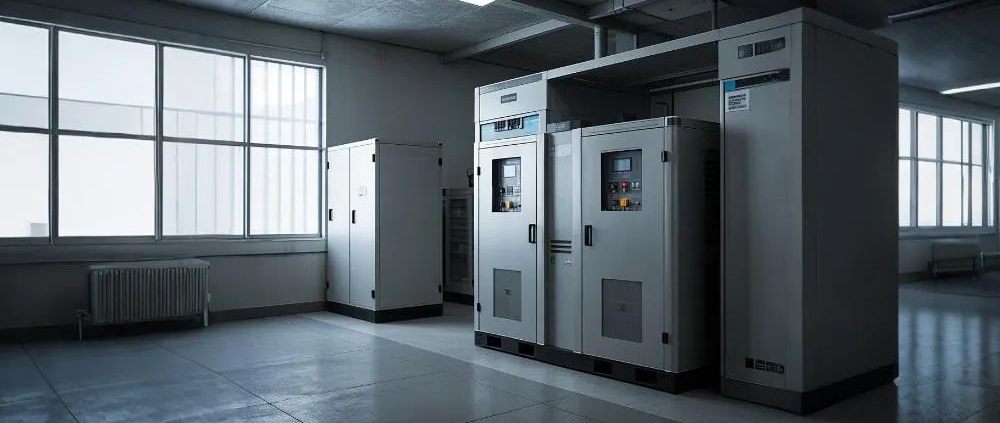The Role of Temperature Management in UPS Battery Lifespan
The Role of Temperature Management in UPS Battery Lifespan
Uninterruptible Power Supply (UPS) systems are critical to the continuity of operations in data centers and other sensitive environments. While battery capacity and voltage are often prioritized during planning and maintenance, one factor that is frequently underestimated is temperature. Regardless of battery type—VRLA, lithium-ion, or others—temperature directly affects battery performance, reliability, and service life.
This article explores how temperature impacts UPS battery longevity and offers practical strategies to manage thermal conditions effectively.
Why Temperature Matters in UPS Battery Systems
Batteries are electrochemical devices, and their performance is intrinsically tied to temperature. Chemical reactions inside a battery are highly sensitive to temperature fluctuations. Even a few degrees’ deviation from the optimal range can significantly accelerate degradation or reduce efficiency.
Common risks associated with poor temperature control include:
- Accelerated chemical aging
- Increased internal resistance
- Reduced discharge efficiency in cold environments
- Thermal runaway, especially in lithium-ion batteries
Ideal Temperature Ranges by Battery Type
| Battery Type | Optimal Operating Temperature | Notes |
| VRLA (AGM/Gel) | 20–25°C (68–77°F) | Every 8–10°C increase can halve battery life |
| Lithium-ion | 15–35°C (59–95°F) | More heat-tolerant but sensitive to extremes |
| NiCd / NiMH | 10–30°C (50–86°F) | Less common in UPS systems |
Effects of High Temperatures on UPS Batteries
While elevated temperatures can enhance the speed of chemical reactions, they also increase wear and tear on battery materials.
For VRLA batteries:
- Electrolyte evaporation or drying
- Grid corrosion and plate sulfation
- Premature end of life (EOL)
For lithium-ion batteries:
- Greater risk of thermal runaway in enclosed spaces
- Triggered shutdowns via Battery Management System (BMS)
- Accelerated capacity loss, even under protection
Example: A VRLA battery rated for 5 years at 25°C may see its lifespan reduced to just 2.5 years if operated consistently at 33°C.
Impacts of Cold Environments
Low temperatures primarily reduce a battery’s ability to discharge effectively.
- Increased internal resistance
- Lower available capacity
- Slower electrochemical activity
While lithium-ion batteries generally perform better in cold conditions than VRLA, their performance is still degraded and charging times can increase substantially.
Signs of Thermal Stress in Batteries
Monitoring can help detect temperature-related battery issues before failures occur. Look for:
- Frequent UPS alarms or shutdowns
- Voltage imbalance across battery strings
- Unusually frequent charge cycles
- Physical swelling in lithium battery cells
Battery Management Systems (BMS) or external thermal sensors can help identify these issues early.
Best Practices for Managing UPS Battery Temperature
- Maintain Consistent Environmental Conditions
- Use precision cooling (e.g., CRAC units or in-rack cooling)
- Ensure even airflow distribution across battery cabinets
- Avoid temperature fluctuations where possible
- Implement Continuous Temperature Monitoring
- Deploy temperature and humidity sensors at multiple points
- Leverage BMS data logging in lithium battery systems
- Conduct monthly data reviews to detect thermal trends
- Avoid Hot Spots
- Don’t stack batteries in tightly enclosed spaces
- Leave air gaps between battery modules for ventilation
- Keep ventilation grilles and ducts unobstructed
- Strategic Equipment Placement
- Avoid placing battery cabinets near exhaust outlets
- Use hot aisle/cold aisle containment designs when applicable
- Adjust Battery Planning Based on Thermal Environment
- In hotter climates, consider reducing VRLA battery service intervals
- In colder regions, add capacity buffers to offset reduced performance
The Hidden Cost of Poor Temperature Management
Failing to manage battery temperatures effectively can result in:
- Increased frequency of battery replacements
- Higher operational and labor costs
- Unexpected downtime events
- Voided warranties due to environmental clause violations
Proactive thermal control—through optimized HVAC, proper layout, and real-time monitoring—can extend battery service life by 30–50% or more.
Conclusion
Temperature control is more than just a facility management issue—it’s a core part of UPS battery reliability and lifecycle optimization. Whether using VRLA or lithium batteries, maintaining stable and appropriate thermal conditions helps prevent failures, extend lifespan, and lower long-term costs.
As infrastructure evolves toward higher-density computing and edge deployments, environmentally responsive battery management strategies will be essential to uninterrupted uptime.


